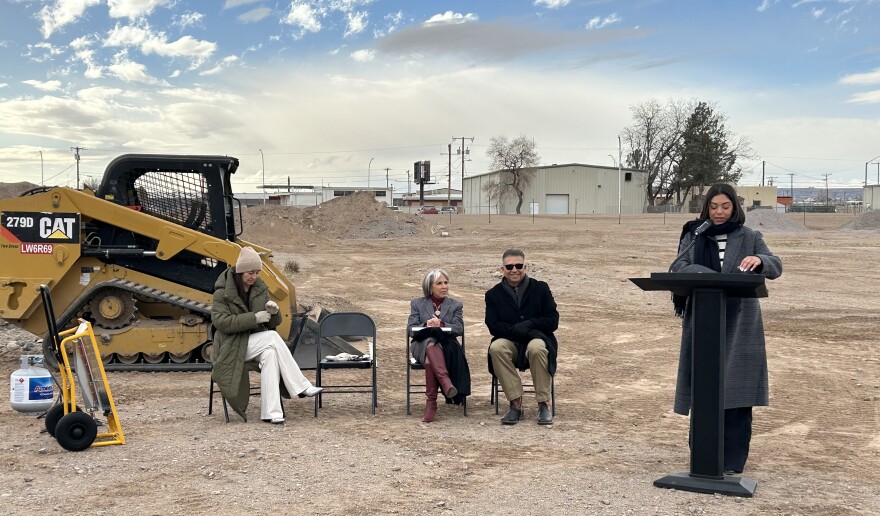On Wednesday, Governor Michelle Lujan Grisham and other dignitaries were on hand as ground was broken for Amador Crossing, a new affordable housing project in Las Cruces.
Amador Crossing is a new public-private housing complex that will be built in partnership with the City of Las Cruces and Mesilla Valley Community of Hope and is designed for families experiencing homelessness or at risk of homelessness, individuals with severe mental illnesses, and low-income families earning between 50% and 80% of the Area Median Income. It will consist of fifty units that will include 25 studio units and 25 one-bedroom units.

Before Wednesday's groundbreaking ceremony, Natalie Green, the housing and neighborhood revitalization administrator for the City of Las Cruces, discussed the need for affordable housing across New Mexico.
“The federal government just put out their latest report on homelessness across the country,” said Green. “Families had the largest increase in homelessness; they had almost a 39% increase. In New Mexico in particular, we are seeing senior citizens become homeless at a faster rate: at least 20% in the Las Cruces area, 60% increases across the state. And so we really want to make sure that we can provide housing for all folks in whatever stage they are.”

Mayor Pro-Tem and District 4 City Councilor Johana Bencomo, one of the dignitaries who spoke at the groundbreaking ceremony, listed the challenges for building affordable housing in New Mexico.
“It’s expensive, right?” she said. “It’s costly, but it’s worth it. It’s an important investment, and we must make it, and we must meet the needs of our community. And I think some of the other pieces that we have to gently push back on are the misconceptions about affordable housing. I think there are a lot of misconceptions on what affordable housing does to a community, but I think because we want to address the homelessness issue, we address it through housing. Homelessness is an issue of housing, and this is what we’re doing here today.”

According to Mayor Pro-Tem Bencomo, the total cost to build Amador Crossing will be about $15 million. The funding so far has come from capital outlay from the New Mexico legislature and the Governor. The City of Las Cruces has committed $4 million and the project received a $1.5 million grant from the New Mexico Mortgage Finance Authority, with $4 million to go to complete the funding.
Amador Crossing will be located at 1101 West Amador in Las Cruces, next to the Mesilla Valley Community of Hope. Nicole Martinez, the Community of Hope’s Executive Director, explained the importance of the location, and what services will be provided for residents.
“We chose this location because it’s close to so many of the services (provided by the Community of Hope), so we think it’s a model that has all the wrap-around services that will help people as they transition out of homelessness,” she said. “They will have food services; health care, both medical and dental; therapeutic services; behavioral health services; they’ll have child care services available; and of course, the services at the Community of Hope.”
At the groundbreaking ceremony Wednesday, Governor Michelle Lujan Grisham praised the city for launching the project.

“We’re committing resources to get things built. Those things, primarily, are housing,” Governor Lujan Grisham told the crowd. “The truth is, we let escalated prices in this country; we didn’t build enough properties; and we stopped thinking about the people who need housing in a multitude of ways.”
The governor also pledged her support for Amador Crossing and future affordable housing projects.
“Congratulations! I’m excited to see what you do next, and I’m committed to getting you the rest of the resources for this and other projects that we need. So let’s get it all done!”

The groundbreaking ceremony was also attended by Las Cruces mayor Eric Enriquez, Mayor Pro-Tem Johana Bencomo, and State Representative Micaela Lara Cadena. According to the City of Las Cruces website, Amador Crossing is expected to be completed within a 15-month schedule, and occupancy may occur as early as April of 2026.



